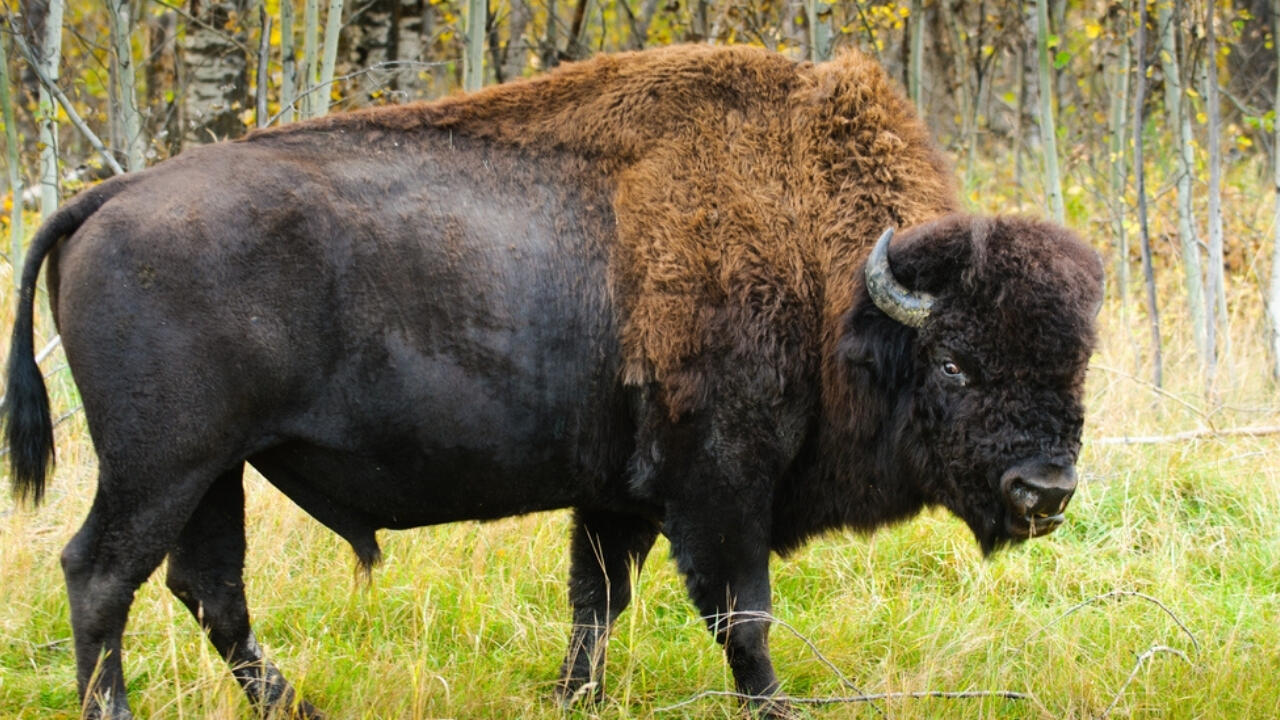Wood bison, North America's largest land mammal, are a fascinating yet lesser-known species. These majestic creatures, distinguished by their massive size and unique adaptations, play a crucial role in their ecosystem. In this article, we delve into ten captivating facts about wood bison that highlight their significance and intriguing characteristics.
1. The Largest Land Mammal in North America
Wood bison hold the title of the largest land mammals in North America. Adult males can weigh up to 2,000 pounds and stand over 6 feet tall at the shoulder. Their impressive size makes them a formidable presence in their natural habitat.
2. Distinct Physical Features
Unlike their cousins, the plains bison, wood bison have a taller, more square hump and a darker, woollier coat. These physical traits help them withstand the harsh climates of northern Canada and Alaska.
3. A History of Near Extinction
By the early 20th century, wood bison populations had dwindled to near extinction due to overhunting and habitat loss. Conservation efforts have since helped their numbers rebound, but they are still classified as a threatened species.
4. Unique Adaptations for Survival
Wood bison are well-adapted to survive in their cold, forested environments. Their thick fur provides insulation, and their large hooves help them navigate through deep snow and muddy terrain.
5. Important Role in Indigenous Cultures
For many Indigenous communities, wood bison are more than just animals; they are a vital part of their cultural heritage. Bison are used in traditional ceremonies, and their meat, hide, and bones serve various practical purposes.
6. Social Structure and Behavior
Wood bison live in herds that typically consist of females and their young. Males tend to be solitary or form small bachelor groups except during the mating season. This social structure helps protect the young and ensure the survival of the herd.
7. Grazing and Ecosystem Impact
As herbivores, wood bison play a crucial role in their ecosystem by grazing on grasses and sedges. This activity helps maintain the health of their habitat, promoting biodiversity and preventing overgrowth.
8. Slow Reproduction Rates
Wood bison have relatively slow reproduction rates. Females usually give birth to a single calf after a gestation period of about 9 months. This slow reproductive cycle contributes to the challenges of increasing their population.
9. Conservation Success Stories
Various conservation programs have been implemented to protect and restore wood bison populations. Initiatives such as captive breeding and reintroduction into protected areas have shown promising results, helping to increase their numbers in the wild.
10. The Future of Wood Bison
The future of wood bison depends on continued conservation efforts and habitat protection. Public awareness and support for these initiatives are crucial to ensure that wood bison thrive for generations to come.
Wood bison are remarkable creatures with a rich history and significant ecological role. Understanding and appreciating these ten facts about wood bison can inspire further efforts to protect and conserve this iconic species. By safeguarding their future, we help preserve a vital part of North America's natural heritage.
